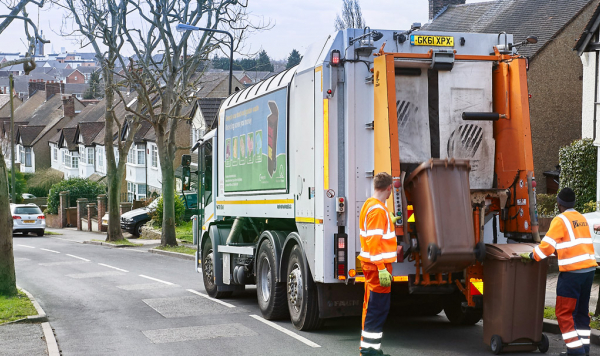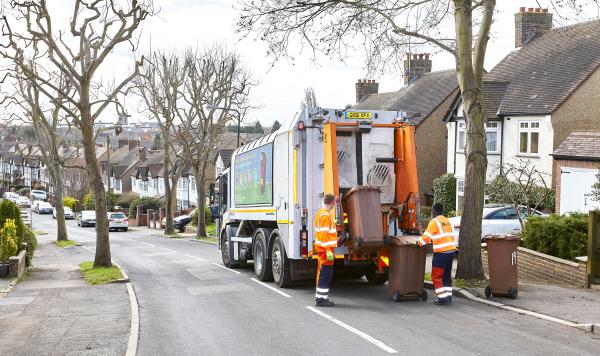Request
The NLWA is putting out a lot of conflicting information in the public domain with regards to carbon capture and storage (CCS). Initially, public statements said there were no plans to include CCS, more recently, especially following the CCC's announcement that future incineration capacity will require carbon capture, the NLWA said: 'NLHPP will have the capability to be one of the first EfW facilities in the UK to retrofit CCUS, when UK infrastructure for transportation and storage is developed' https://www.nlwa.gov.uk/news/north-london-heat-and-power-project-aligns-bold-action-plan-cut-uk-carbon-emissions
At the Camden Council Environment and Scrutiny Committee meeting on 22nd March 2021, XX once again raised the possibility of installing carbon capture on the proposed incinerator. http://democracy.camden.gov.uk/ieListDocuments.aspx?MId=9923&x=1
I am highly worried that the NLWA is using the prospect of potential future CCS to alleviate the concerns of councillors and to make the case that the proposed facility will be aligned with the CCC’s recommendations- but that the potential for future CCS is being overstated.
I would like to see all NLWA documents that substantiate the claim that the ‘'NLHPP will have the capability to be one of the first EfW facilities in the UK to retrofit CCUS, when UK infrastructure for transportation and storage is developed'
I would like to see all documents related to CCS, especially (but not limited to):
-Technical feasibility assessments, including how the logistics of carbon storage and transport in a urban area are to be overcome
-Evidence in procurement tenders that the new incinerator will be retrofit ready
- Cost assessments of CCS retrofit, and implications on the NLHPP’s business model and costs to the 7 North London boroughs
- An assessment of the timeline in which the technology is expected to become available, and when it might be fitted on the NLHPP
- An assessment of the emissions impact of CCS technology on the overall emissions burden of the NLHPP across its lifetime, including emissions impact before and after installation of CCS, and the effects on the carbon intensity of the electricity and heat produced, recognising the fact that CCS itself is energy intensive.
- Any other technological, financial and environmental modelling done with regards to future retrofit of the NLHPP with CCS technology.
Many thanks
Response
REF: Request for information about Carbon Capture Use and Storage (CCUS) and Carbon Capture and Storage (CCS)
Thank you for your request of 23 March 2021 regarding the above. This request is being handled under the Environmental Information Regulations (EiR) 2004 and has been allocated the reference number 2021-105[1].
NLWA is actively investigating the use of Carbon Capture Use and Storage (CCUS) technology. Our low-carbon Energy Recovery Facility (ERF) will already be an asset for the Net Zero economy, by diverting waste from landfill and generating low carbon heat and power. CCUS has potential to make our facility carbon negative, meaning it would be able to take carbon dioxide out of the atmosphere. This reinforces the vital importance of our strategic piece of infrastructure for London.
In 2019, the UK became the first major economy to place a commitment to net zero greenhouse gas emissions by 2050 into law. The Intergovernmental Panel on Climate Change, the UK Climate Change Committee (CCC) and the UK Government are clear that CCUS will need to form a key pillar in our efforts to meet Net Zero by 2050; without CCUS Net Zero is not achievable. The CCC’s 2020 progress report re-iterates that CCUS is “a necessity, not an option for the UK’s net-zero objectives”, requiring significant progress in the 2020s and major investment in transport and storage infrastructure. Specifically, in the waste sector, the CCC states that energy from waste facilities should be the disposal route for residual waste during the transition to Net Zero, with CCUS fitted to all facilities by 2050. The CCC stipulates that no biodegradable waste including food should be landfilled by 2025 and that emissions from non-bio wastes should also be limited.
2. The government has announced a £1 billion fund to establish CCUS in two industrial clusters by the mid-2020s, and aims for four of these sites by 2030, capturing up to 10 million tonnes of carbon dioxide per year. It is estimated that the UK Continental Shelf could safely store 78 billion tonnes of CO₂. This is the equivalent of 200 years of the UK’s annual CO₂ emissions meaning that the capacity for storage presents a huge opportunity to support UK’s climate targets.
3. Recognising the government’s commitment to accelerating the deployment of CCUS, NLWA is actively investigating the potential for CCUS to be deployed at the EcoPark as part of our longer-term ambition for managing carbon. The Authority’s ambition is to be one of the first ERF operators in the UK to use CCUS when the infrastructure for transportation and storage is available in north London. We aim to promote awareness of this essential technology within the waste management sector recognising its growing importance globally.
4. In 2020, NLWA commissioned an initial study to look at high-level options for carbon offsetting and abatement (Carbon Offsetting and Abatement, May 2020). Later in 2020, the Authority brought together leading experts in the field to discuss the opportunity for CCUS on the new ERF (CCUS review - Technical note, November 2020). This research explored a variety of related topics including national and international policy, technology options, funding and financing, transport, storage and markets. These reports are provided in response to this environmental information request response.
5. Taking forward recommendations from the preliminary research undertaken in 2020, NLWA is developing a CCUS Strategy for the ERF. The research will be undertaken over the coming months. The aim of the work is to determine the most optimal CCUS option for the ERF in terms of on-site capture technology, liquefaction and temporary storage and off-site transport, use and storage, from a technological, financial, and environmental perspective. This assessment will also determine the potential for having a single CCUS facility (i.e. just for the ERF), as well as the option of forming a London/South East cluster, that the ERF could be part of. The CCUS Strategy for the ERF is under development and can be made available in due course. However, NLWA does not hold this information at the moment and it is therefore not releasable in response to this information request.
6. In addition to the above, a Technical Carbon Capture Readiness Assessment is well underway to understand any potential constraints in the design of the ERF such that these could be discussed in dialogue with bidders (June to August 2021). This work which is ongoing will ensure that our ERF is designed such that CCUS is not precluded in the future. This is similarly not releasable in response to your EiR request, and we provide an explanation of the reasons for this in the appendix to this letter.
7. Despite CCUS being in its infancy in the waste sector, NLWA has already carried out extensive preliminary work and has planned further detailed studies in 2021 to ensure we future proof our facility.
8. We know CCUS is a proven technology. In 2020, 40 million tonnes of CO2 were captured using CCUS. But the technology is new in the energy-from-waste sector. Pilot schemes are being developed in Norway (Northern Lights) and Copenhagen (Amager), both of which are receiving significant government funding. In the UK, SUEZ is investigating the feasibility of CCUS on one of its facilities in Teeside. The plant benefits from close proximity to the proposed Net Zero Teeside CCUS project.
9. We recognise there are many challenges to overcome, all of which depend on legislative and financial support from Government, for example, CO2 transport, logistics and storage, financing and end markets (e.g. horticulture, chemicals and fuels).
10. The government has not allocated any specific funding for energy-from-waste projects. It has only planned for four clusters by 2030, none of which are in London. This is despite the CCC calling for a national programme of investment in CCUS for energy-from-waste facilities.
11. The likelihood that CCUS will be economically viable depends greatly on establishing a shared ‘infrastructure hub’ in Greater London and the south east of England for carbon dioxide transport, intermediate storage and shipment to a long-term storage facility. This is expected to take considerable time and will also rely on the successful development of projects for clean hydrogen supply such as Project Cavendish in the south east of England, which have similar infrastructure requirements for carbon dioxide intermediate and long-term storage.
12. Clear policies and economic incentives are also required to scale up CCUS and reduce the investment risk. The Global CCS Institute states in their latest ‘Global Status of CCUS 2020’ report that the United States success of deploying 12 of the 17 new global CCS facilities initiated in 2020 demonstrates that: “…where policy creates a business case for investment, projects proceed.”.
13. The economic viability and delivery timeline for an ERF-CCUS project depends on the drivers described above including a development of a shared infrastructure hub (such as a London/South East cluster), clean hydrogen supply, clear Government policies and economic incentives for CCUS.
14. Given the complexity of stakeholder alignment, and current lack of a shared infrastructure hub and economic incentives for an ERF-CCUS project in north London, it is unlikely that an ERF-CCUS solution will be viable within the short-term (i.e. less than 10 years). However, it is likely that an ERF-CCUS solution will become economically viable within the lifetime of the NLHPP, and within the timeframes stipulated by the CCC in its Sixth Carbon Budget, but this is subject to the project enablers mentioned above.
15. The Authority wants to be one of the first ERF operators in the UK to use CCUS. The ERF will be designed such that CCUS is not precluded in the future, when the infrastructure for transportation and storage is available in north London.
16. When appropriate infrastructure is in place in London, NLWA’s ERF will be capable of retrofitting CCUS. The ERF is a low-carbon asset for north London’s communities. It is vital for tackling the Climate Emergency, and CCUS will deliver even greater environmental benefits.
If I can be of any further assistance please do not hesitate to contact me.
If you are dissatisfied with this response and wish to appeal, please reply to this email or submit a complaint via our website complaints page at: https://www.nlwa.gov.uk/enquiry-form
Your request should be submitted to us within 40 working days of receipt by you of this response.
If you are still not satisfied, you have a right to appeal to the Information Commissioner:
https://ico.org.uk/global/contact-us/email/
Information Commissioner's Office, Wycliffe House
Water Lane, Wilmslow
Cheshire, SK9 5AF
0303 123 1113
Yours sincerely,
External Relations Manager & Data Protection Officer
Enc.
NLHPP Carbon offsetting and abatement_Issue 1_Ver1
• Carbon Offsetting and Abatement, May 2020
• This is the first research report finalised in May 2020
Redactions – names identifying individuals on the document verification sheet before page 1.
Rationale for redactions – this is personal data without consent to release the information.
CCUS review TN_Final_Ver2 (redacted)
• CCUS review - Technical note, November 2020
• This is the document which resulted from the workshop on CCUS.
Redactions – names identifying individuals on the sign-off sheet page 2 and names of the attendees of the workshop, page 6.
Rationale for redactions – this is personal data without consent to release the information.
[1] Given the nature of our activities and the fact that environmental information is interpreted quite broadly we now generally answer information requests under the Environmental Information Regulations rather than the Freedom of Information Act. Further detail is available at: http://www.ico.gov.uk/for_organisations/environmental_information.aspx
EXPLANATORY APPENDIX REGARDING RELEVANT DOCUMENTS THAT ARE NOT RELEASED IN RESPONSE TO THIS INFORMATION REQUEST
CCUS Strategy for the ERF
Because this strategy is under development and NLWA does not yet have the strategy this document cannot be released in response to this information request. Accordingly, this letter acts as a refusal notice under Regulation Regulation 12 (4) (a) of the EiR, namely that the Authority does not hold the information.
Technical Carbon Capture Readiness Assessment
The Authority has commissioned a Technical Carbon Capture Readiness Assessment to understand any potential constraints in the design of the ERF such that these could be discussed in dialogue with bidders (June to August 2021). The aim of this work is to ensure that our ERF is designed such that CCUS is not precluded in the future. Because the Technical Carbon Capture Readiness Assessment has not been received, it cannot be released in response to this information request.
Please note that if we receive a request for this document once it is in our possession, we consider it likely that we will refuse to disclose it until after the ERF procurement is completed, as it is for use specifically to provide advice for the Authority in a commercially confidential procurement environment.
Because the Authority does not hold the Technical Carbon Capture Readiness Assessment, we are making the following exception to releasing the information under Regulation 12 (4) (a) of the EiR, namely ‘Authority does not hold the information’.
Accordingly, this letter acts as a refusal notice on the grounds of the exception under Regulation 12 (4) (a) of the EiR.




